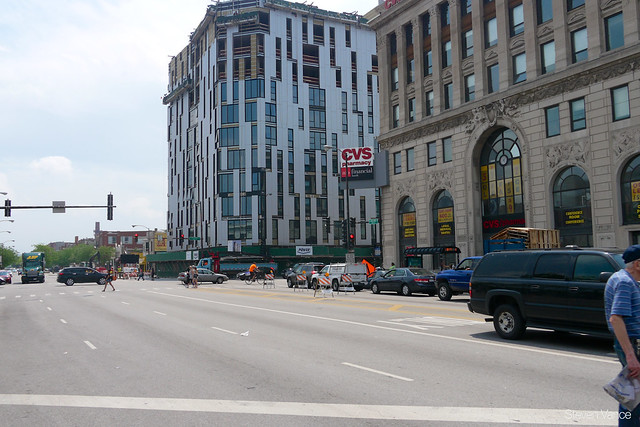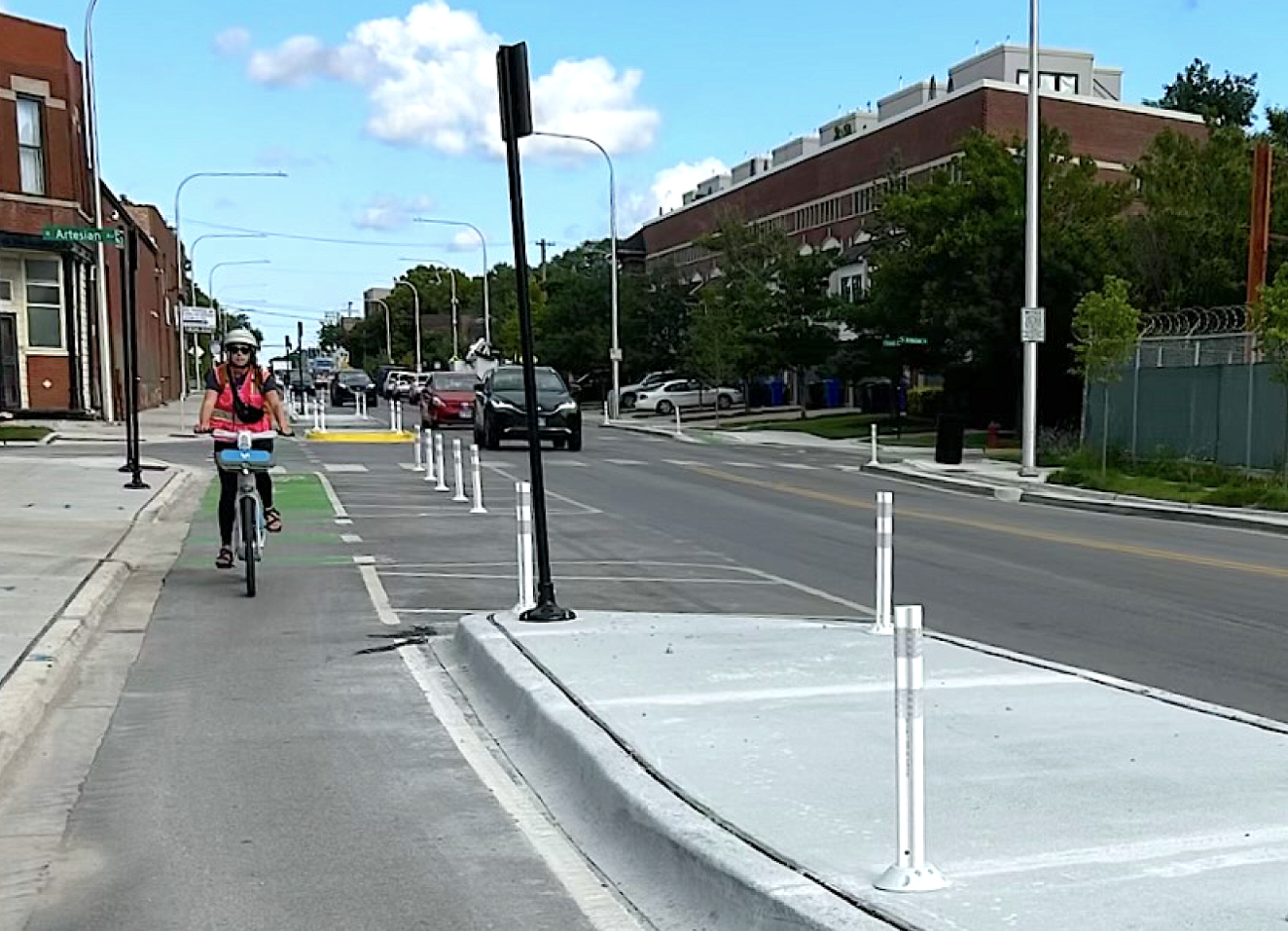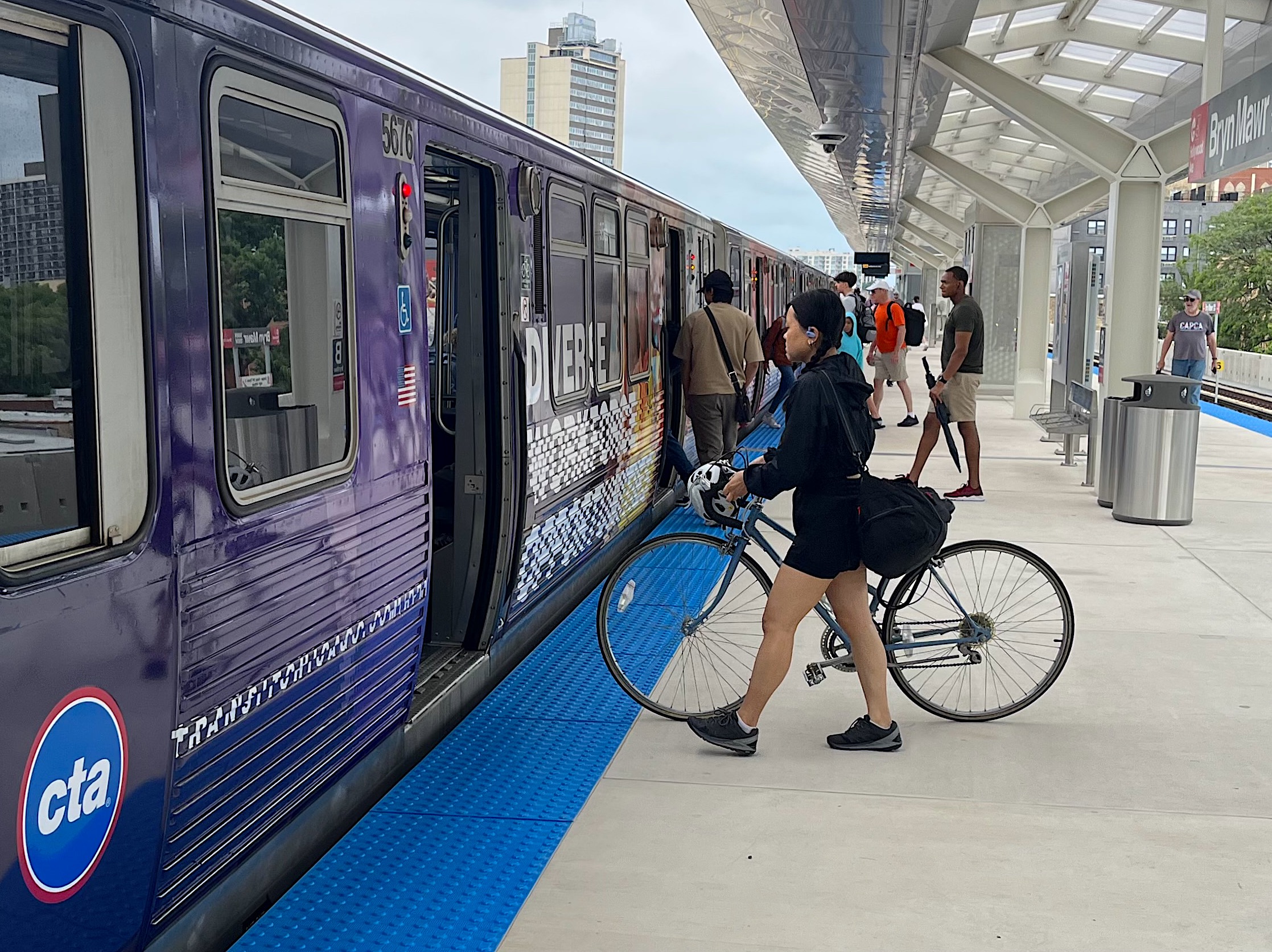Last Wednesday, the City Council zoning committee passed Mayor Emanuel's proposed ordinance allowing more walkable, less car-oriented development near train stations. But before the vote, the legislation was watered down with an amendment that makes it harder to construct buildings with lower volumes of car parking.
Under the amendment [PDF], commercial developments that include less than 50 percent of the parking required in the zoning district must be on designated pedestrian streets ("P-streets") and must go through the "administrative adjustment" process. As originally proposed, the ordinance allowed developers to construct parking-free commercial projects without having to meet either requirement. (Administrative adjustment entails the developer seeking "relief" from the zoning administrator and sending written notice to abutting property owners and the alderman, soliciting their comments. In 10 days, the zoning administrator reviews all the comments and approves or denies the developer's proposal.)
The ordinance was a hot topic and the debate attracted some aldermen who don't serve on the committee. Zoning Administration Administrator Patricia Scudiero said that the proposal came about because after reviewing the requests for relief that came into her department, "these were the requests that were most common." She added: "[Parking required in] the zoning code is a lot higher than what their need is. Some of you believe that more parking is better, and some developers believe that. I don't think that's going to change."
Luann Hamilton, deputy commissioner of transportation, offered CDOT's perspective when asked if Mayor Emanuel was "thinking globally" with this ordinance. She said the trend in driving and car ownership is down: "People don't necessarily want to be driving, but they want to be texting, getting work done, and transit is perfect for that."
Alderman Brendan Reilly described the situation in the 42nd Ward, which covers a majority of the Loop and River North:
What I've learned downtown, allowing developers to develop surplus or code-mandated minimums, wasn't just bad for the pedestrian experience, but also for transit. Big, blank, dead walls, making a canyonization effect. If you build it they will come. Traffic congestion is one of those top three issues our constituents are bringing up to us. I've been encouraging developers to voluntarily drop the number of parking spaces. We dramatically reduced parking at Wolf Point. And that's without passing the ordinance before us.
First Ward Alderman Proco "Joe" Moreno pointed out that the 99-unit rental apartment building at Division/Ashland offers zero parking spaces for tenants (and 15 for the adjacent bank and retail). This was made possible by an ordinance he drafted and passed last year, a small-scale predecessor for the current citywide proposal.
While the current proposal would let more walkable development take root in many parts of the city, it still only applies to a radius of 600 feet from rail stations -- 1,200 feet in designated P-street zones. Scudiero said those limits were chosen to keep the less car-centric development on arterial streets and out of neighborhoods. But two advocates said the ordinance should go farther, by applying to a wider area and eliminating all barriers to reduced parking. Since the amendment was not published before the hearing, neither were aware the ordinance had been watered down when they testified.
Peter Skosey, vice president of Metropolitan Planning Council, testified in support and suggested strengthening the ordinance. The phrase "train station," he said, should be replaced with "fixed guideway station," to identify TOD areas that will be created with the upcoming bus rapid transit project on Ashland Avenue. Skosey also suggested that P-street development rules, which include restrictions on curb cuts and drive-throughs, should also apply to the TOD areas, since transit stations are by nature pedestrian destinations.
Jacky Grimshaw, vice president of policy at the Center for Neighborhood Technology, said that 1,200 feet would barely cover City Hall's distance to the Washington Blue Line station. The building's entrance, not on a P-Street, is 850 feet away as the crow flies and 1,100 feet by walking. Grimshaw said that a "larger radius would better support transit-dependent neighborhoods like Woodlawn" and pointed out that a half-mile radius would cover an area 20 times larger than the current proposal.
Grimshaw also suggested eliminating parking minimums altogether around train stations. "They're costly to developers," she said, "[the costs are] rolled into housing prices, typically up to one-fifth the cost of the unit." She added that these costs disproportionately affect lower-income residents because they can least afford it. In place of the parking, she said that developers could build more units.
"CNT encourages the committee to remove these various restrictions," Grimshaw concluded in her testimony. Later she told me over the phone, "We should allow the elimination of parking minimums as a right for developers and to reduce the amount of additional approvals at every step along the way... Anything that makes it more difficult to develop in transit zones, we are not supportive of." CNT has published additional critiques of the ordinance on its website, specifically noting that the current proposal provides little incentive for developers to build in places CNT has identified as "Priority Development Areas," including around the Addison Brown Line station and Polk Pink Line station.






